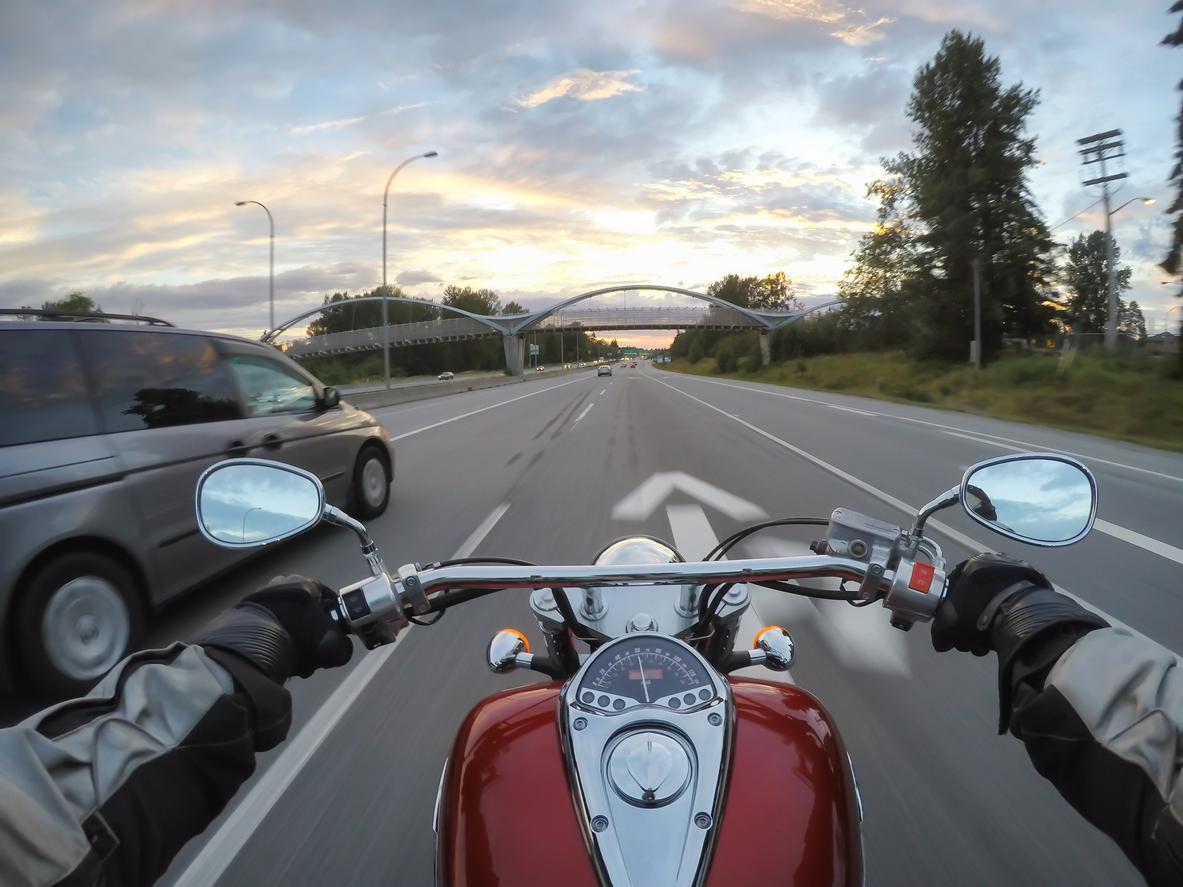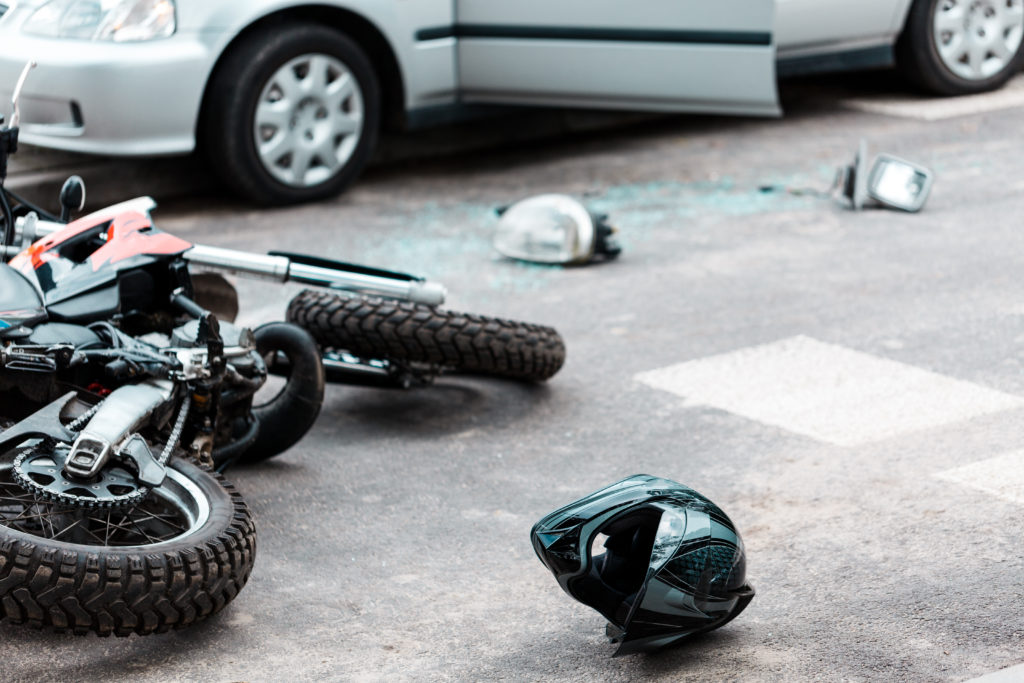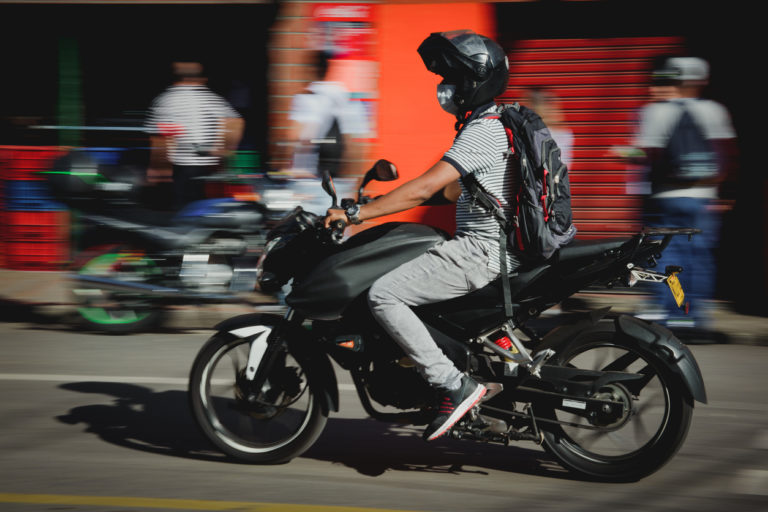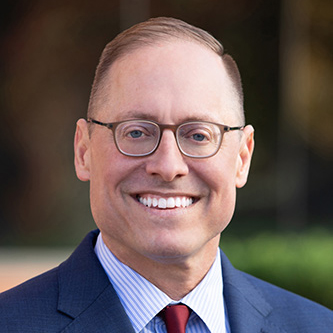Stephen Hasner | Motorcycle Accidents | April 1, 2023

The most common motorcycle accidents involve cars turning left in front of you, drivers changing lanes into you, rear-end collisions, and suddenly opened car doors.
Data shows that the Atlanta metro area has the highest rate of motorcycle crashes in Georgia, with Fulton, Dekalb, Gwinnett, and Cobb counties being particular hotspots.
Even when another driver is clearly at fault for causing a collision, motorcyclists face an uphill battle. Insurance companies may look for any opportunity to suggest the rider was somehow to blame. This unfair bias stands in the way of receiving fair compensation for your injuries, medical bills, and lost wages.
If you have a question about a motorcycle crash that injured you or a family member, call Hasner Law PC for a free consultation at 678-888-HURT (4878).
Key Takeaways for Atlanta Motorcycle Riders
- Left-turning cars are the single greatest danger to riders. Drivers frequently misjudge a motorcycle’s speed or fail to see it at all, leading to devastating collisions at intersections.
- Always assume other drivers do not see you. Ride proactively by avoiding blind spots, wearing high-visibility gear, and being prepared for sudden lane changes or stops from other vehicles.
- Georgia’s fault laws impact your ability to recover compensation. If you are found to be 50% or more at fault for a crash, you are legally barred from receiving any money for your injuries, making it vital to counter any unfair blame placed on you by an insurance company.
#1: The Left-Turn Collision: A Driver Turns Directly Into Your Path
The scene is a familiar one: you are approaching an intersection, proceeding straight, when an oncoming car suddenly turns left, directly into your path. This is one of the most frequent and dangerous situations for any rider. The driver’s excuses are usually the same—they either misjudged your speed and distance or claim they simply “didn’t see” your motorcycle at all.
This is a failure of the driver’s legal duty of care. For a motorcyclist, this scenario leaves almost no time to react, resulting in a collision that is a leading cause of serious injuries and death for riders.
#2: The Lane Change Sideswipe: A Car Merges Into Your Space

Atlanta’s multi-lane highways, including I-75, I-85, and the I-285 Perimeter, are prime locations for lane-change sideswipes. This happens when a driver, without properly checking their blind spot, merges directly into the space you occupy. The impact is either direct or forces you off the road entirely.
A motorcycle’s narrow profile makes it easy for a distracted or hurried driver to miss with just a quick glance in their mirrors. It is a failure of the driver’s responsibility to confirm the lane is clear before moving. With no protective structure around you, the consequences are catastrophic.
#3: The Rear-End Collision: A Following Driver Fails to Stop
Rear-end collisions happen because a tailgating or distracted driver does not react in time when you slow down or stop.
Motorcycles stop much more quickly than cars, a fact that catches many inattentive drivers off guard. The impact from a rear-end collision is severe, potentially throwing you from your bike and into the path of other traffic. A motorcycle insurance company may try to argue you stopped too suddenly, but the primary responsibility almost always lies with the driver who fails to maintain a safe following distance.
#4: The “Dooring” Accident: A Parked Car’s Door Opens Suddenly
A driver or passenger in a parked vehicle opens their door directly into your path without looking for oncoming traffic. A collision with a stationary car door is devastating for a motorcyclist.
There is almost no time to react to a door that swings open unexpectedly. This is a clear act of negligence by the person exiting the vehicle. The resulting accident is caused by either striking the door itself or by swerving into active traffic to avoid it.
#5: The Gravel Patch or Pothole: Unexpected Road Hazards
Loose gravel, construction sand, potholes, and other roadway debris that barely affect cars can be disastrous for motorcycles, often stripping away traction and control, especially in a curve.
If you’re in a single-vehicle crash, it may seem like no one else is at fault, but that’s not always true. Poor road maintenance by a government agency or negligence by a contractor who left a spill behind could be to blame. Proving liability requires examining maintenance logs and records.
#6: Speeding and Loss of Control: Misjudging a Curve or Speed
Excessive speed is a contributing factor in many motorcycle accidents, particularly on winding roads or highway exit ramps.
If a crash involves high speeds, an insurance company will be quick to place most, if not all, of the blame on you. This is because Georgia operates under a comparative negligence law, a legal rule that means that if you are found to be 50% or more at fault for the accident, you are barred from recovering any compensation for your injuries. This holds true even if another driver’s actions also contributed to the crash.
#7: Driving Under the Influence: The Impaired Rider or Driver
Operating a motorcycle requires a high level of physical coordination and mental focus. Any impairment from alcohol or drugs drastically increases the risk of a crash. This section addresses two distinct dangers: the impaired rider and the impaired driver of another vehicle.
If you are found to be riding under the influence in violation of O.C.G.A. § 40-6-391, it will be extremely difficult to pursue a personal injury claim. Conversely, if you are hit by a drunk driver, their impairment provides strong evidence of their negligence. However, their insurance provider will still conduct a thorough investigation, looking for any evidence to argue you were also at fault.
The Driver Said They Didn’t See You: How Rider Bias Complicates Your Claim
After a crash, one of the most common statements made by at-fault drivers is, “I just didn’t see the motorcycle.” This phrase is the foundation of an insurance company’s strategy to shift blame onto you.

An insurance adjuster may use this statement to build an argument that you were at least partially responsible. They might investigate if you were speeding, riding in a blind spot, or even if your headlight was functioning correctly. Their goal is to assign you a percentage of fault to reduce or deny your claim. As we mentioned above, Georgia’s comparative negligence rule means your compensation is reduced by your percentage of fault. If they successfully argue you were 50% or more at fault, you are legally entitled to nothing.
This is why having an advocate on your side is so important. Our firm has deep experience handling these cases and we conduct our own independent investigation to build a case based on facts, not bias. We may:
- Gather physical evidence: This includes analyzing skid marks, vehicle damage patterns, and road debris to determine the sequence of events.
- Find witnesses: We locate and interview people who saw what truly happened, not just what the driver claims.
- Subpoena traffic or dashcam footage: This provides objective, indisputable video evidence of how the crash occurred.
- Hire accident reconstructionists: These professionals use science and physics to prove exactly how a collision happened and who was at fault.
Your focus should be on your physical and emotional recovery. Let a dedicated legal team handle the investigation and the insurance negotiations.
Motorcycle Crash Statistics in Georgia: What Riders Need to Know
Where Are the Most Dangerous Areas for Riders?
Georgia’s most densely populated counties are also where the highest number of serious motorcycle crashes occur:
- Metro Atlanta leads the state in both fatal and non-fatal motorcycle wrecks. In one recent year, the Atlanta region accounted for 42% of all motorcycle crashes in Georgia.
- Fulton, DeKalb, Cobb, Gwinnett, and Bibb Counties consistently show the highest crash volumes and fatalities involving motorcycles.
- Interstates like I-75, I-85, and the I-285 Perimeter are frequent sites of lane-change crashes and rear-end collisions.
This data matches the real-world trends we see in our cases: high-speed highways, congested city streets, and poorly marked construction zones are repeat offenders.
When Do Motorcycle Crashes Happen Most?
Crash data reveals clear patterns in timing:
- The summer and early fall months (May through September) are peak season for motorcycle crashes due to better riding weather and more vehicles on the road.
- Weekend evenings show the highest incidence of serious and fatal crashes—often linked to impaired or distracted driving.
- Rush hour traffic in urban areas increases risk for sideswipe collisions and rear-end accidents as impatient drivers change lanes aggressively.
These time-related trends allows us to uncover patterns of negligence, like a contractor rushing to finish work during rush hour or a bar with repeated DUI-related incidents nearby.
Who Is Most at Risk?
Georgia’s data also shows who is most frequently involved in serious motorcycle crashes:
- In another recent year, over 50% of motorcyclists involved in crashes lacked a valid motorcycle license. While this doesn’t automatically prevent a personal injury claim, it is something insurance companies will use to argue against you.
- Riders aged 25–34 represented the largest group involved in fatal motorcycle crashes statewide.
- The majority of serious crashes involved male riders, consistent with national trends.
These facts help tailor our legal arguments and anticipate how insurance companies will try to assign fault based on demographics or licensing status.
How Do These Crashes Affect Riders Financially?
The medical and financial toll of motorcycle crashes is enormous:
- In one year alone, emergency room and hospital charges from motorcycle crashes in Georgia totaled over $269 million.
- Riders often suffer severe injuries requiring long-term care, rehabilitation, and income replacement, costs that go far beyond the initial ER visit.
This is why documenting your injuries early and working with a law firm experienced in high-value motorcycle claims is so important. We help quantify and prove these damages so nothing is left on the table.
Frequently Asked Questions About Atlanta Motorcycle Accidents
Do I still have a case if I wasn’t wearing a helmet in Georgia?
Yes, you may still have a case. While Georgia has a universal helmet law (O.C.G.A. § 40-6-315), not wearing one does not automatically prevent you from receiving compensation. The other party’s insurance would have to prove that your specific injuries were caused by the lack of a helmet (e.g., a traumatic brain injury). You could still pursue compensation for other injuries, such as a broken leg or road rash, that are unrelated to helmet use.
What is the deadline for filing a motorcycle accident lawsuit in Georgia?
In most cases, you have two years from the date of the crash to file a personal injury lawsuit. This deadline is known as the statute of limitations. There are very few exceptions to this rule. Speak with a motorcycle accident attorney promptly to understand the specific timeline that applies to your case.
Is lane splitting illegal in Atlanta?
Yes, lane splitting is illegal. O.C.G.A. § 40-6-312 explicitly prohibits operating a motorcycle between lanes of traffic or adjacent rows of vehicles. If you are involved in a crash while lane splitting, that fact is used to argue that you were at fault.
What if the at-fault driver is uninsured or underinsured?
In these circumstances, your auto insurance policy becomes the primary means of recovery. Uninsured/Underinsured Motorist (UM/UIM) coverage is intended to address such situations, providing compensation for medical expenses, lost earnings, and related damages. Our firm conducts a comprehensive analysis of your policy to ensure that all potential sources of coverage are identified and pursued.
How much does it cost to hire Hasner Law PC for my case?
Our firm handles personal injury cases on a contingency fee basis. This means you pay nothing upfront for us to begin working on your case. When you choose an experienced personal injury lawyer, you only pay a fee if we successfully secure a settlement or verdict in your favor.
Don’t Let an Insurance Company Decide Your Future

Following a severe motorcycle accident, you may be told that you share partial responsibility, that your claim will be difficult to establish, or you may face pressure to accept a swift, undervalued settlement as medical expenses accumulate.
You do not have to accept this narrative. You have the right to have the facts of your case fully investigated and to pursue the maximum compensation available under Georgia law. This covers your medical care, lost income, and the many other ways an injury rewrites your life.
To better understand your legal options, call Hasner Law PC at 678-888-HURT (4878) for a free, no-obligation case review. We are here to listen to your story and provide clear, straightforward answers.
We serve in Fulton County, Chatham County, and its surrounding areas:
Hasner Law PC – Atlanta Law Office
2839 Paces Ferry Rd SE #1050
Atlanta, GA 30339
(678) 888-4878
Hasner Law PC – Savannah Law Office
221 W York St
Savannah, GA 31401
(912) 234-2334


